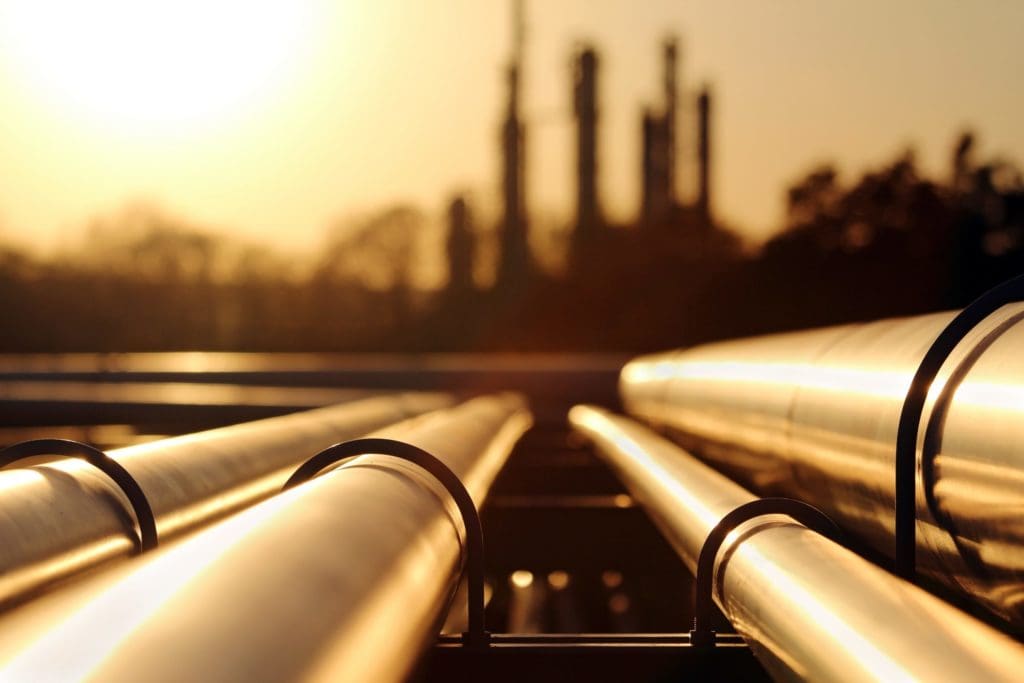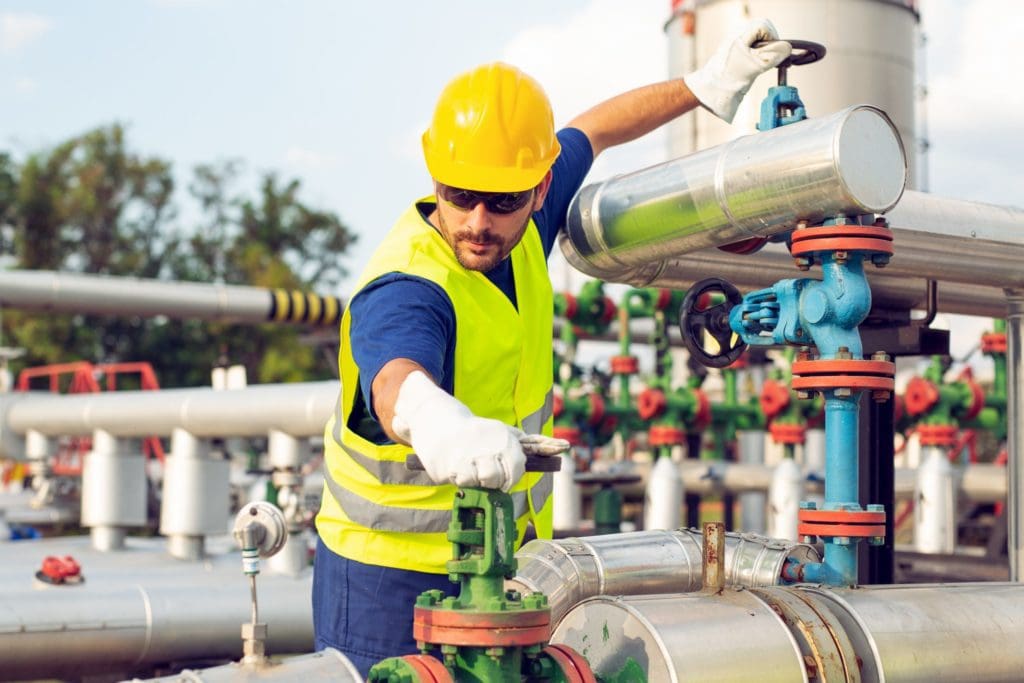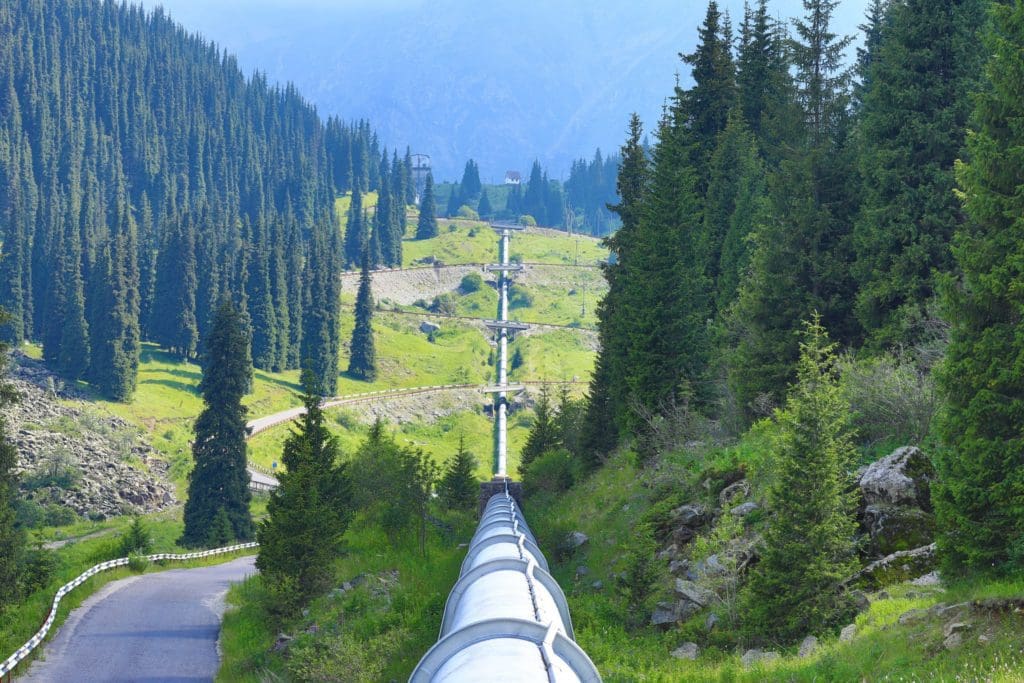The United States has a vast network of inter-and intrastate pipelines that serve a vital role in transporting water, fuels such as diesel, gasoline, and natural gas, and raw materials such as crude oil. There are over 2 million miles of pipelines in the nation. Every day, our nation’s pipeline infrastructure ages. We must look more closely at the pipelines and effective ways of fixing any issues with those pipelines.
One of the safest ways to implement pipeline repair is with cold spray because there are no flames or molten metals, and process temperatures are low. VRC Metal Systems’ Cold Spray System is the ideal solution for your liquid handling system’s metal repair needs. Contact VRC Metal Systems today to find out how we can help.

An Introduction To Pipelines
The nation’s pipelines are a transportation system used to move goods and materials. While some pipelines are aboveground, such as the Alaska Pipeline, the majority of pipelines in the U.S. are buried underground. Because the public doesn’t see these pipelines, most individuals are unaware of this vast network’s existence.
Pipelines safely transport a variety of products such as sewage and water in extraordinary quantities. However, the most common products transported are for energy purposes, including natural gas, biofuels, and petroleum products such as diesel, gasoline, and crude oil.
Pipelines vary by the goods transported, the pipes’ size, and the material used to make them.
The pipeline network fuels the nation’s daily functions and livelihoods by delivering needed resources. Pipelines take energy from their point of origin to facilities that turn it into useful fuels and products. Then other pipelines take that fuel or other products on to your local communities. Energy products delivered by pipeline can include crude oil, refined products (gasoline and diesel), and natural gas liquids (methane and propane).
Pipelines are designed for their operating conditions, constructed with quality certified steel, assembled with qualified personnel, and pass multiple inspections before any operation. The certified steel meets industry and federal government quality requirements for toughness and strength. Construction personnel, such as pipe welders, must have qualification certifications.
Powerful pumps or compressors move the fluids through the pipe at “around walking speed.”
The nation’s millions of miles of pipelines are essential to the functioning of society.
The sheer volumes of energy products they move are well beyond the capacity of other forms of transportation. The railroad equivalent of a single, modest pipeline would be a train of over two hundred 28,000-gallon tank cars.
Pipeline systems are also the safest means to move these products. The federal government rededicated itself to pipeline safety in 2006 when they signed the PIPES Act into law. It mandates new methods and makes commitments for new technologies to manage the nation’s pipelines’ integrity and raise the bar on pipeline safety.

Our Aging Pipelines
Poorly maintained and faulty pipelines may pose health and environmental risks if the fluids spill or leak into the soil, or if natural gas escapes and seeps into buildings. Not only are these incidents costly to control and clean up, the chemical or oil spills can also have long-lasting impacts on the environment and the public. Older pipelines are more likely to leak than newer ones, so this issue will only increase as pipeline infrastructure ages.
Explosions can also occur with faulty pipelines that leak natural gas. Unlike oil or liquid spills, which generally spread and infiltrate into the soil, gas leaks can cause above-ground explosions because these gases are lighter than air.
There are environmental concerns with the construction, operation, and malfunctioning of pipelines. These ecological concerns vary depending on the method of building and where the pipelines are.
Some of these concerns include:
- Reduction of air quality during construction and emissions due to the construction equipment’s use of fossil fuels.
- Increased noise pollution from the construction equipment and the pipeline’s pumping stations.
- Soil contamination and erosion from construction and any leaks.
- Loss of plant life in the community due to the building, any surface disturbances, leaks, and changes in water flow.
- Water resource disturbances resulting from erosion, herbicides, and leaks.
It is impossible to avoid all of the environmental impacts. It is possible to reduce them, though.
Fixing Aging, Damaged, or Corroded Pipelines
Repairing corroded or damaged pipelines is an essential part of any business using pipeline technology. The cost of pipeline repair for corrosion and damage is between $5 and $8 billion in North America annually. Over half of that annual cost is in pipeline maintenance. Replacement is a costly option because many pipelines run underneath cities. They cannot easily be dug up and replaced.
There are, admittedly, many documented approaches for various kinds of repair. However, many of these require high temperatures. Thermal metal repairs may cause heat-related damage. Even more significantly, thermal repairs may weaken the substrate.
As stated by the Office of Pipeline Safety, thermal metal repair techniques also require the complete shutdown and evacuation of any hazardous materials from the pipeline. This delay is hugely inconvenient and cost-prohibitive, extending the project deadline. In some cases, the repair can’t be accomplished, which also considerably extends the project deadline.
Public safety has been a catalyst for tighter regulations that require better corrosion controls and repair techniques. Cold spray, or Supersonic Particle Deposition, has enabled safer, cost-effective means to get the job done.

Why VRC’s Cold Spray System Is The Best Solution
VRC’s cold spray technology offers various methods to repair and control corrosion in an existing pipeline.
The low temperatures accomplish the metal repair without leaving behind additional damage to the pipeline.
The technician can make the repairs in place, rather than the extensive requirements of shutting the pipelines down for repairs.
The cold spray deposited materials can potentially improve the substrate’s integrity to a state better than its original. Deposition substances can be selected to either match the substrate material or to provide additional corrosion-inhibiting qualities. When applied as part of a regular inspection and maintenance program, cold spray can significantly reduce the risk of failure and extend the equipment’s life.
VRC Metal Systems has patented cold spray technology to repair your damaged or corroded pipelines and storage vessels. In most cases, technicians make the repairs while the pipeline remains pressurized, and in some cases, it doesn’t matter if the pipeline is actively leaking. VRC has a patented method to repair active leaks in pipes using cold spray.
This solution has the potential to help you save millions of dollars in maintenance and repair costs. VRC’s Cold Spray System is the ideal solution for your liquid handling system’s metal repairs. Contact us today to find out how we can help.

